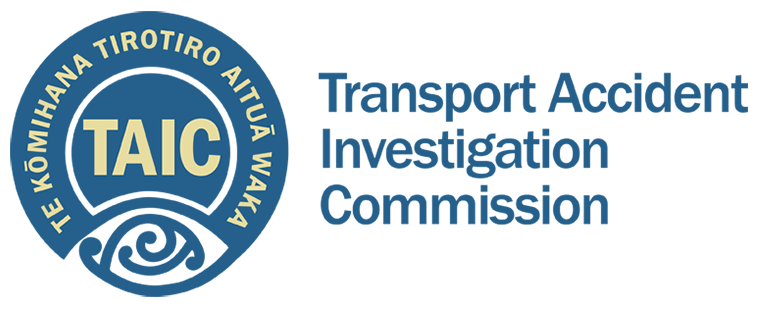Evidence is collected relating to the four broad categories considered in any inquiry:
- People – including who was involved, relevant professional and personal background, what they knew, thought, experienced, and did.
- Machine – including individual and type history, performance, maintenance, design.
- Environment – including physical, weather, operating company safety system and culture, traffic control, regulatory.
- Mission – the purpose of the incident or accident journey, and the organisation’s relevant processes and their use in this case.
Securing the scene
TAIC investigators work with emergency services, the operating company and transport regulator to ensure evidence is protected. After emergency services have rescued survivors and stopped further physical and environmental damage, the scene is frozen until our investigators arrive or we give permission for other activity. The Commission may formally seize or order protections of the vehicle, scene and other evidence. TAIC has control of the scene, and co-ordinates the access required by other authorities.
At least two of the investigation team will typically travel to the scene. Depending on circumstances and scale, investigators may be supported by a vehicle recorder and data specialist, families and media liaison officer, and logistics support. The investigation team co-ordinates with the emergency and other services involved. The field team may also be supported by Land Search and Rescue, Coastguard, Fire and Emergency NZ, Police, or similar specialist agencies. Health and safety considerations are particularly important in what can sometimes be difficult and potentially dangerous working conditions. Risks and hazards can include weather and terrain, accident vehicle dangers such as sharp, flammable or unstable wreckage, pollutants and disease.
The evidence
Evidence collection is broad to support the many routes that an investigation could follow. The initial focus is on gathering evidence that could disappear or change. This includes recording the accident scene, recovering wreckage, securing electronic records, and interviewing witnesses. Investigators also gather maintenance and vehicle records and documents related to the vehicle’s operating company (operator) and key personnel. Investigators may also seek information from related services such as traffic control. If there are fatalities, our medical consultant will liaise with the forensic pathologist and Coroner. Relevant general information is gathered from New Zealand and overseas.
Investigators are authorised to use the Commission’s legal powers to protect and gather evidence, and sometimes the Commissioners may decide to interview witnesses themselves.
All the evidence gathered has extensive legal protection from disclosure. This prohibits us from talking in detail about what we have seen and heard. If another agency is investigating the same event, we may give them access to physical evidence (but not our interpretation of it) under strict conditions.
Early assessment
Early in the inquiry, Investigators brief the Commissioners on what is happening, including the scene examination and associated health and safety considerations. They discuss emerging lines of inquiry and potential focus areas to be considered as evidence gathering continues and analysis begins. They may consider the need for urgent recommendations or whether to produce an interim report setting out the key facts established so far.
Interviews and collection of physical and documentary evidence can continue over the first few months as different lines of inquiry are followed. Work in later stages, particularly during analysis, may identify the need for more evidence collection.
